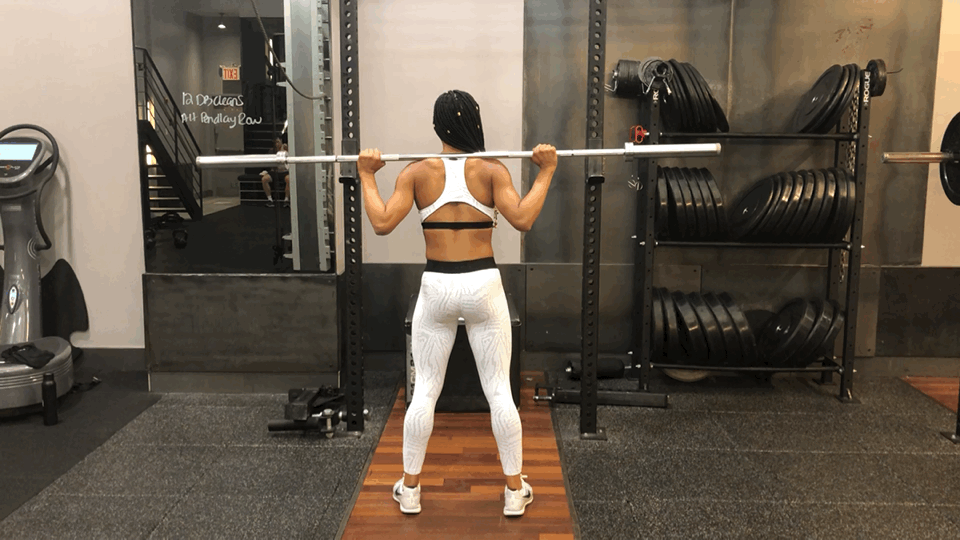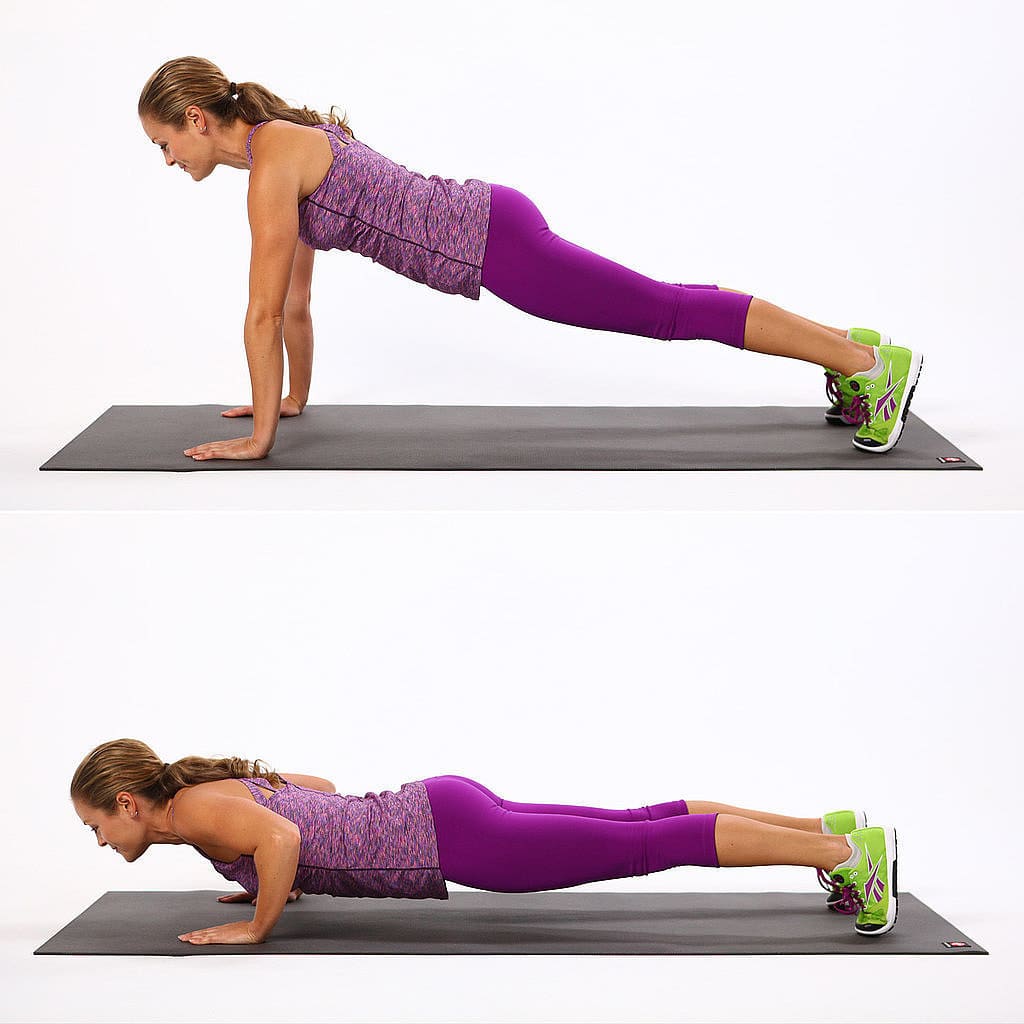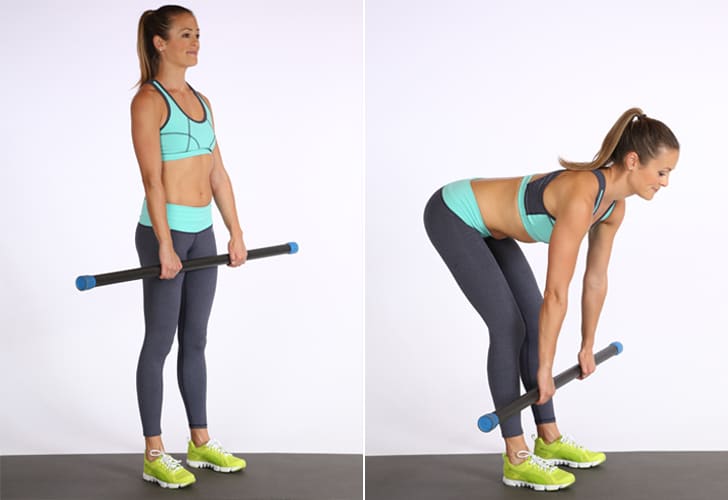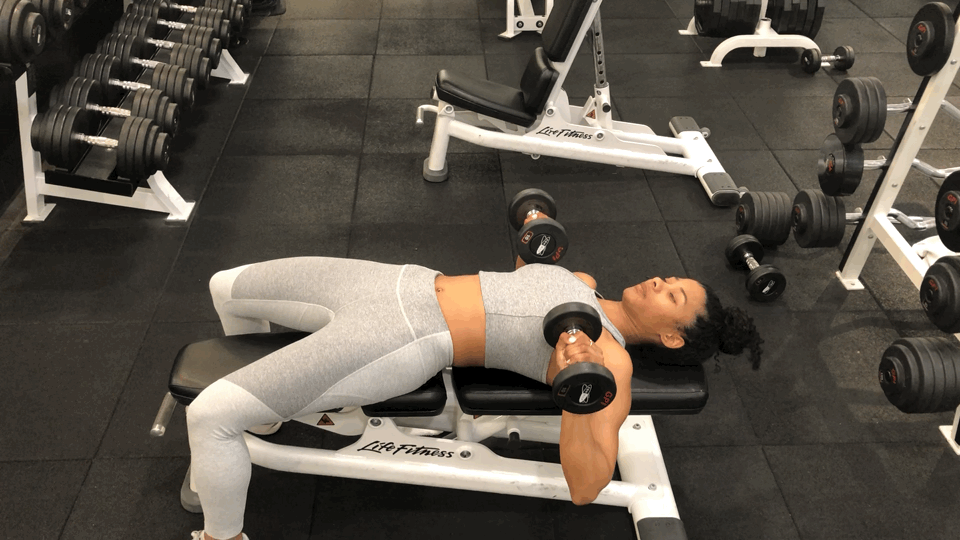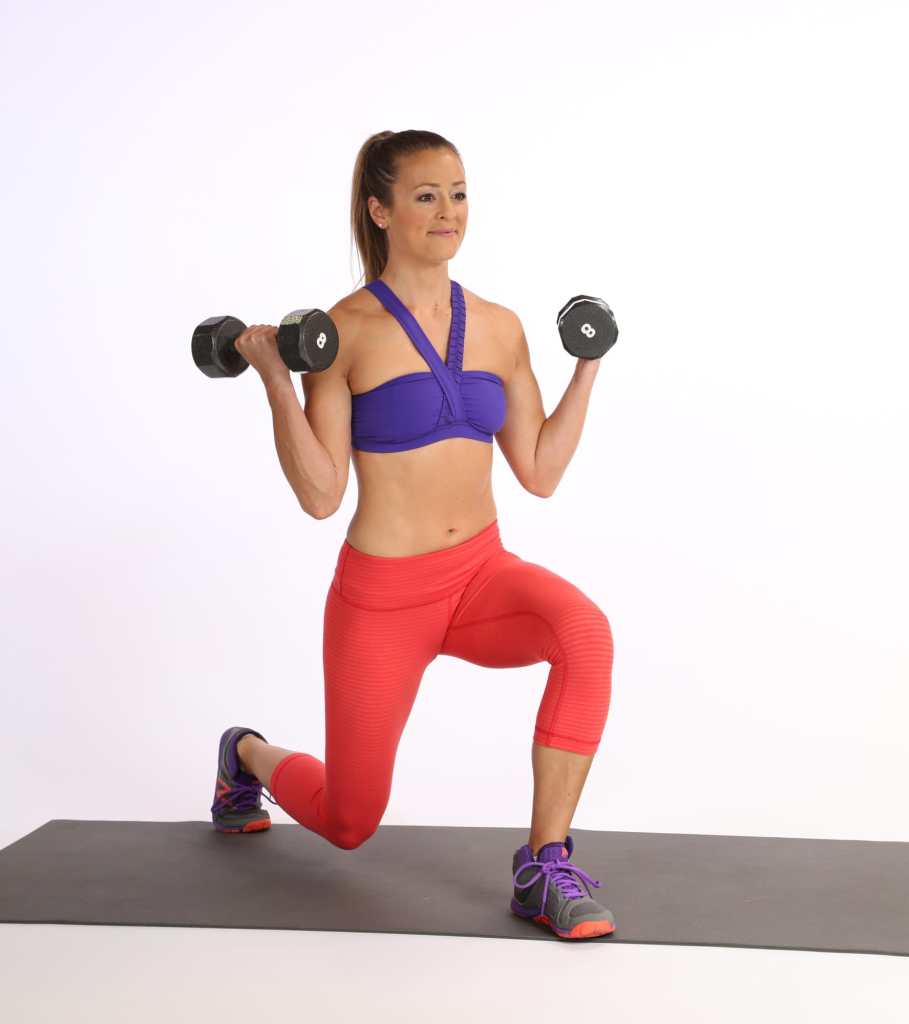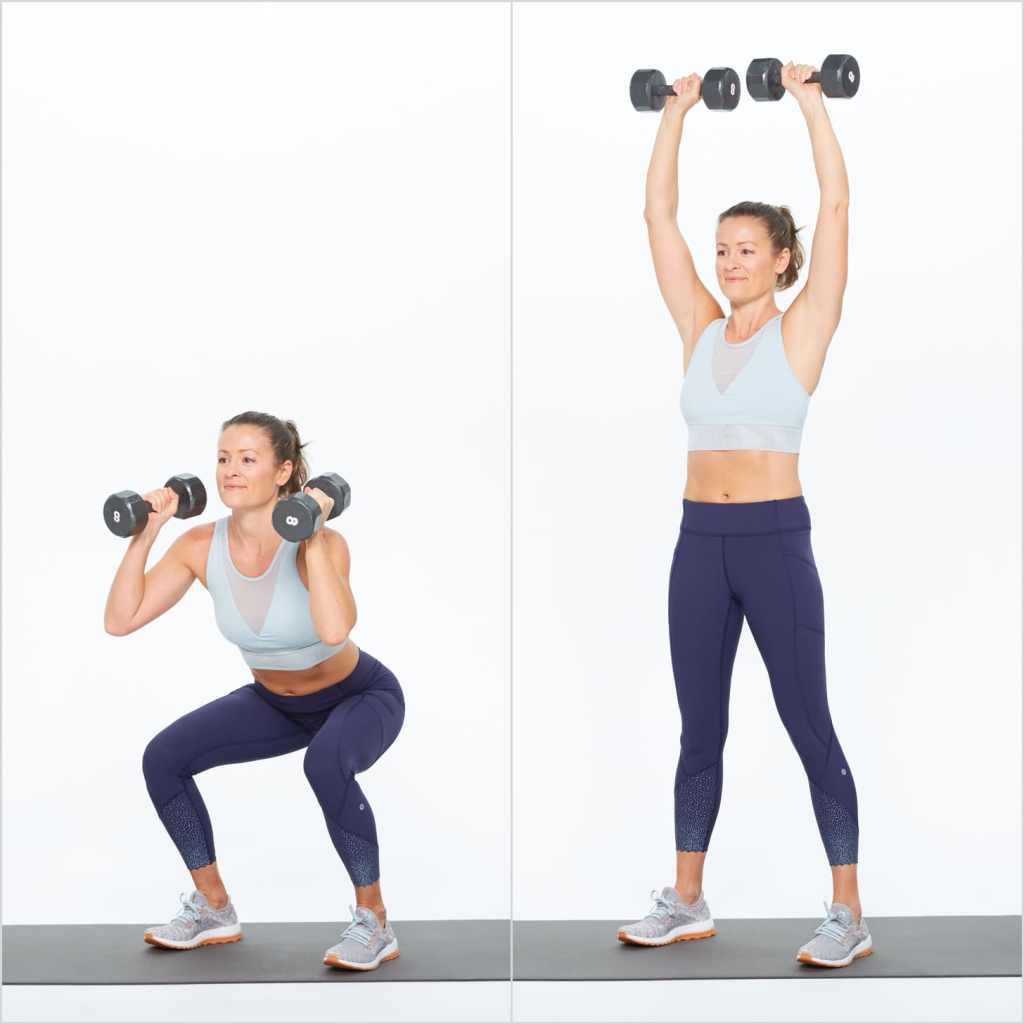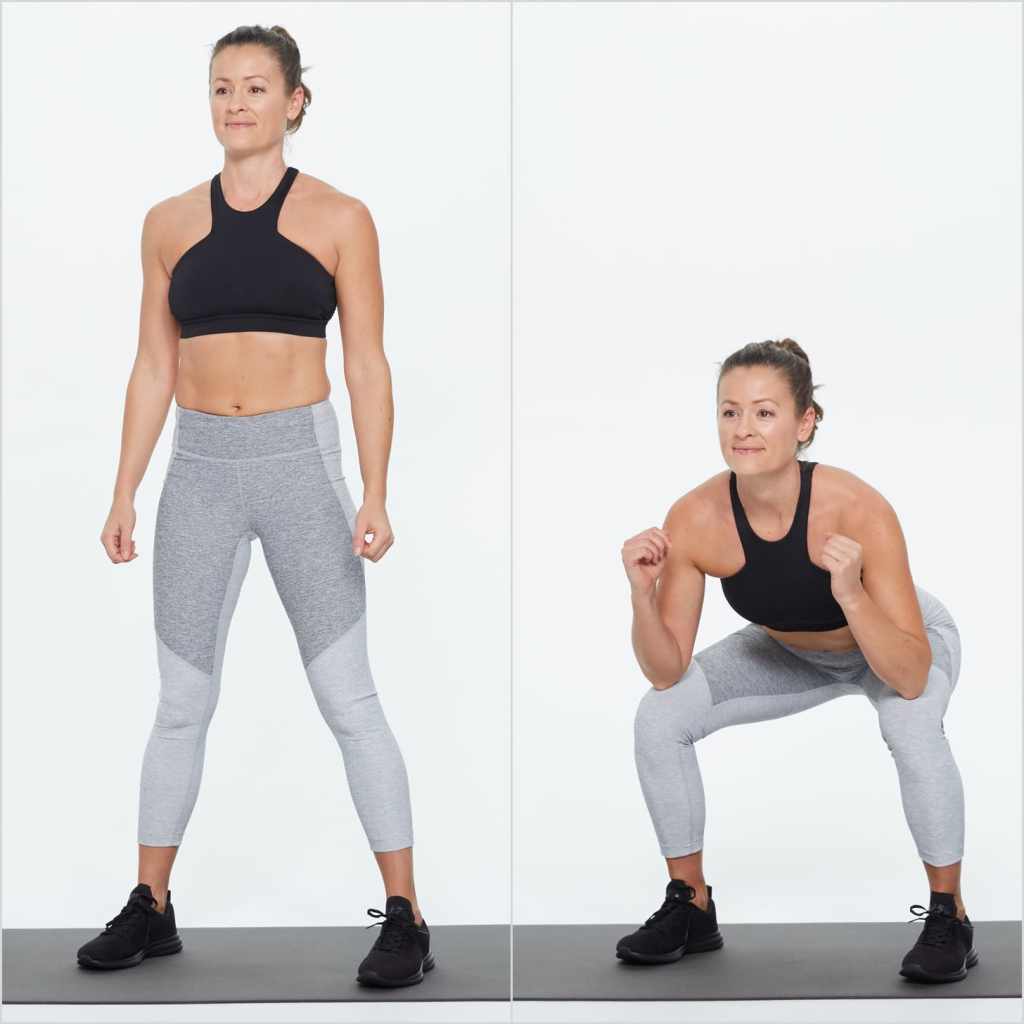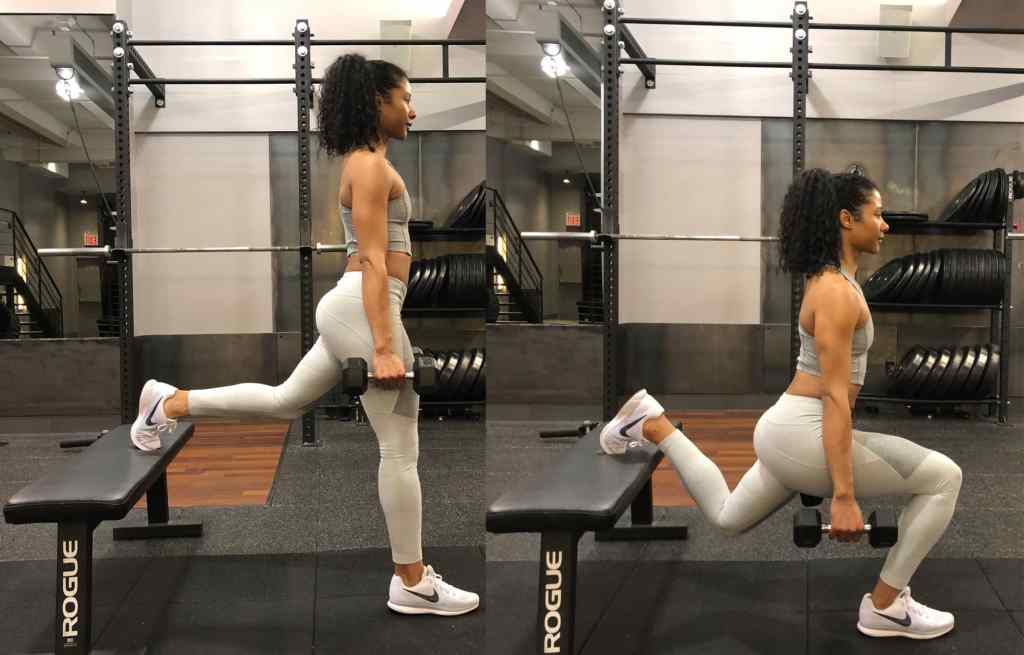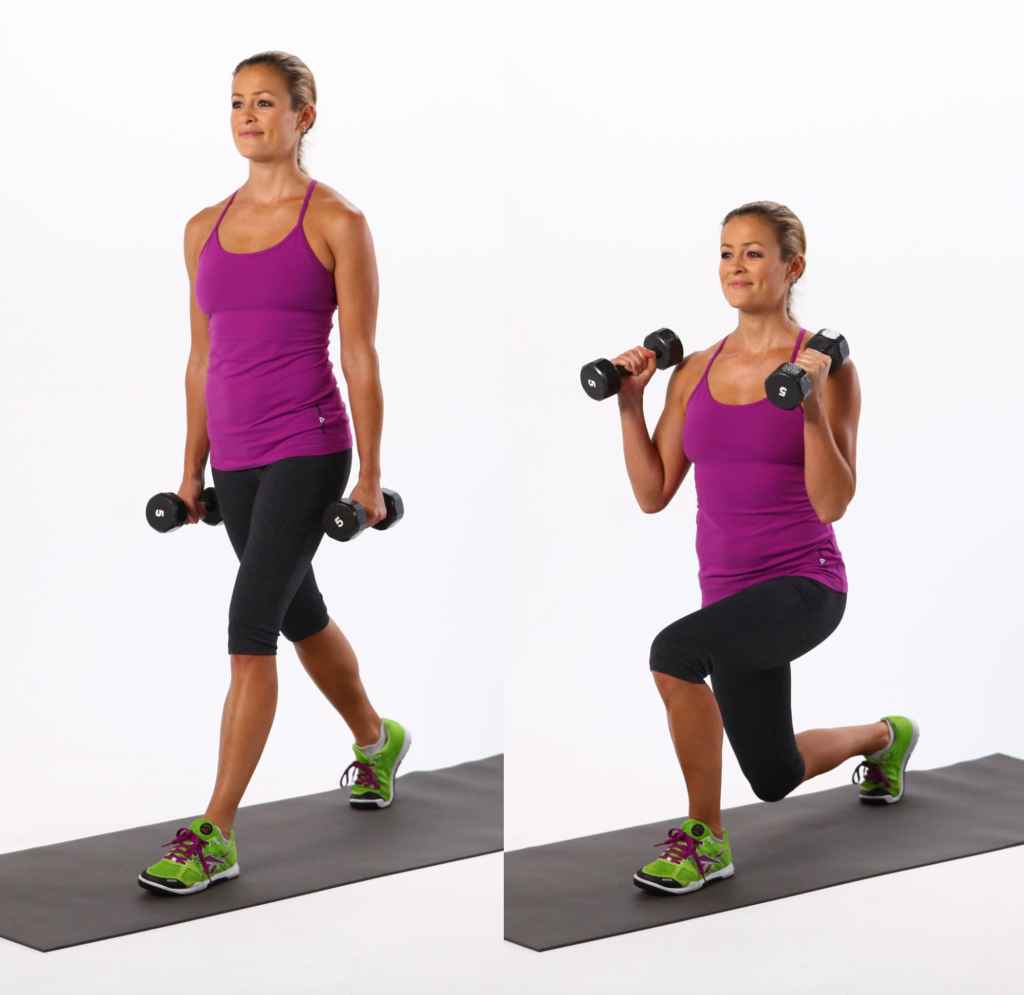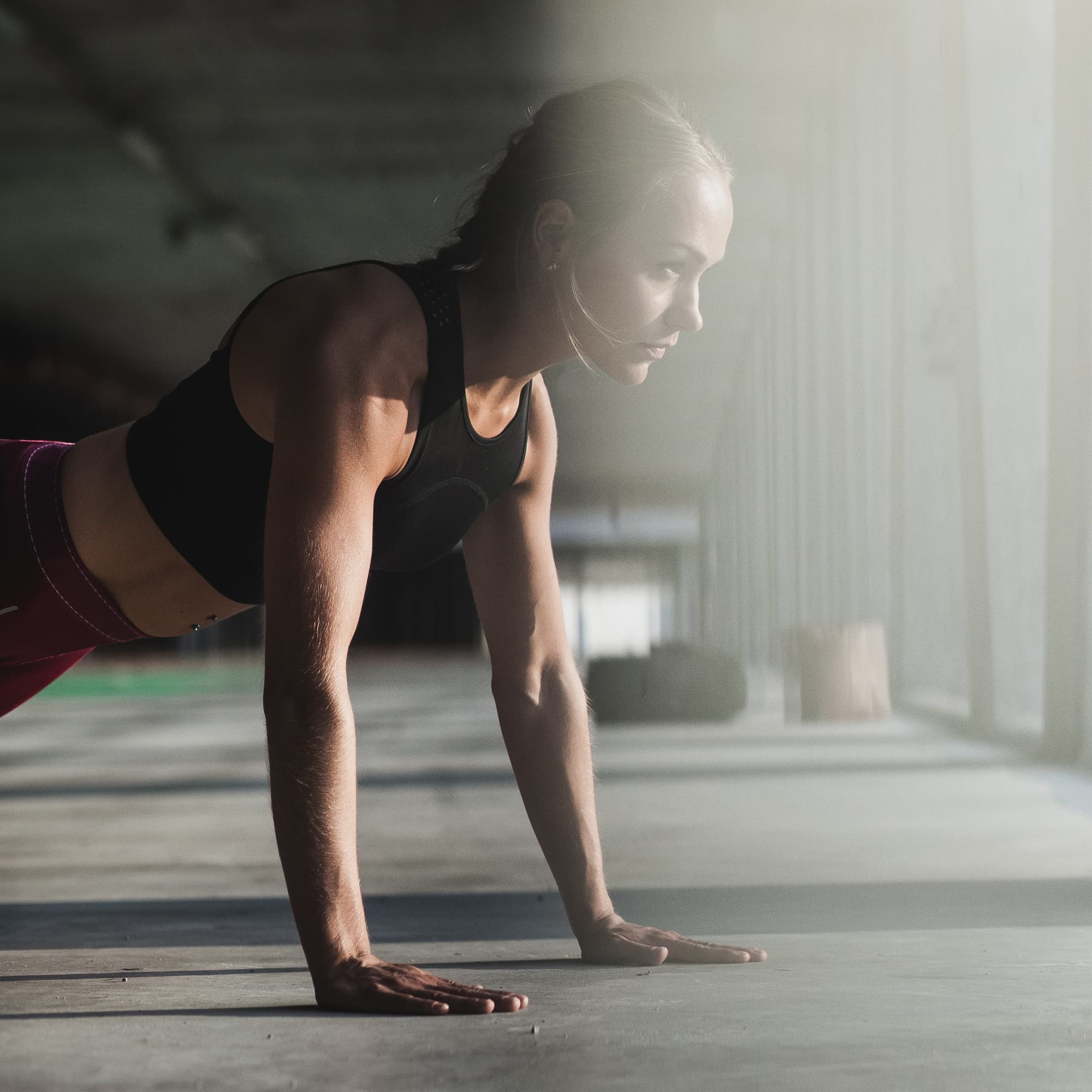
- POPSUGAR Australia
- Fitness
- Squats, Push-Ups, Burpees: What They All Have in Common and Why Trainers Want You to Do Them
Squats, Push-Ups, Burpees: What They All Have in Common and Why Trainers Want You to Do Them

Put simply, compound exercises are moves that recruit large muscle groups and use multiple joints. “You’re activating several muscles or muscle groups at one time,” Brooke Taylor, NASM- and ACE-certified personal trainer, who also has specialties in pre- and postnatal fitness, told POPSUGAR. She said they work various ranges of motion and incorporate level changes as well. “Whereas, if you’re sitting down at a machine and you’re doing leg lifts or something like that, you’re isolating one muscle group,” she explained.
Compound exercises can use body weight or resistance. They can be as basic as an air squat or push-up, or they can be more advanced like a squat to burpee push-up and press, Brooke noted. So, it’s doing one exercise that works multiple muscle groups at the same time, like a push-up, or it’s “taking two or three [or more!] different exercises and putting it into one big one,” Brooke said simply. But, you have to ensure that the more components there are, the more you focus on keeping correct form (which we’ll talk about later).
Meg Morat, NASM-certified personal trainer, told POPSUGAR that barbell squats, split squats, deadlifts, squat to overhead press, and bench press are other examples of compound exercises. On the other hand, bicep curls themselves, for instance, are considered more of an isolated move. But, added onto a move like a lunge, that whole exercise – lunge to bicep curl – would be a compound exercise.
Brooke said that she particularly likes compound exercises because they elevate the heart rate and are based on functional training, meaning they “simulate everyday movements,” she explained. “It gets the client off the machines and works stability, strength, and muscular endurance.” Compound exercises also help you avoid plateaus in your progress, she said, since there’s a potential to keep adding weight or additional components to make them more challenging.
For instance, take the squat example we used before: a squat is considered a compound exercise because it works, among other muscles, the quads, glutes, hamstrings, and core. You could add a row to this move, and tacking on extra elements – or “layering,” as Brooke called it – shocks the muscles. Plus, both Brooke and Meg said this makes workouts more interesting.
“A lot of times you’re working in different vascular systems . . . you’re working in both an aerobic and anaerobic threshold,” Brooke told POPSUGAR. “You’re getting your heart rate elevated a lot higher than you would if you were just doing straight cardio.” But, at the same time, it’s interval training, Brooke said. What’s more, elevating your heart rate and strengthening large muscle groups will burn more calories and, in addition, burn more fat.
Meg, who said that compound exercises are great for core stability, also said that she typically advises her clients to do these moves at the start of a workout – after a warmup, of course – because that’s when they have “the most gas in the tank.” If you’re only just starting to incorporate compound exercises into your routine, you’re building up to more reps, or you’re adding on components to the moves you already do, Meg, like Brooke, wants you to pay close attention to form. You can, she said, ask a personal trainer at the gym, and “make sure that the form correction you’re getting is from a certified professional, too, not just something you see on social media.”
As compound exercises become more complicated, Brooke advised that you progress slowly, simply because this is where form can drop. Make sure that you have the basic movement patterns down first. One compound exercise she’s referring to is a burpee pushup, bicep curl, to overhead press (you can add rows to this, too). Similarly, if you’re doing lunges, make sure you’re able to do them with proper form as well as proper knee and toe alignment, she said. Then, you can layer on other elements like bicep curls or overhead presses.
Ahead, check out some of the moves that Brooke and Meg discussed here, along with other compound exercises to try. Burn calories, build up strength, and get to work!
Barbell Squat
- Start with a loaded barbell; 75 pounds is a great starting point. Beginners should start with just the barbell and gradually add weight as they become familiar with the movement.
- Position your hands about shoulder-width apart on the barbell, and lightly grip the bar with an overhand grip.
- Step in front of the rack, and rest the bar on your trapezius muscles (the muscle closest to your neck/upper back).
- With your feet about hip-distance apart, lift the barbell off the rack. Take one to two steps backwards.
- Shift your weight back into your heels. Brace your abs as you begin to lower into a squat, keeping your head and spine in a neutral position. Your knees should be as close to 90 degrees as possible. Hold for one second.
- With your core still braced, drive through your heels to stand back up. Be sure to squeeze your glutes at the top of your squat. That’s one rep.
Push-Up
- Start in a plank position, with palms spread out evenly and your shoulders over your wrists and legs out behind you. Pull your belly button in, and keep your back straight.
- As you lower and exhale, bend your elbows outward to the sides. Hold at the bottom before you raise back up to complete one rep.
Romanian Deadlift
- Holding a barbell, two dumbbells at your side, or another weight, keep your arms straight and knees slightly bent.
- Slowly bend at your hips, not your waist, and lower the weights as far as possible without rounding your back, which should remain straight. Looking forward, not at the ground, will help you avoid rounding your back. Keep the weights close to your legs.
- Squeeze your glutes to slowly pull yourself up. This counts as one rep.
Low to High Woodchop
- Squat, and twist left to hold the dumbbell on the outside of your left leg.
- Exhale, and lift the weight diagonally across your body, ending twisted to the right with the dumbbell above your head. Pivot on your left foot as needed.
- Control the weight back up to the starting position to complete one rep.
- Remember you are moving with force but also control. Don’t give into the momentum of swinging the weight around.
Dumbbell Bench Press
- Grab a set of dumbbells, and sit on a flat workout bench.
- With one dumbbell in each hand resting on your thighs, lie back onto the bench.
- Hold the dumbbells above your chest, shoulder-width apart, creating a 90-degree angle between your upper arm and forearm. Palms should be facing forward.
- Exhale as you push the dumbbells up, fully extending your arms. Hold for one second.
- Inhale and lower the dumbbells to the sides of your chest with control.
- This counts as one rep.
Reverse Lunge With Bicep Curl
- Begin with your feet together, holding dumbbells at your sides.
- Step your right foot back into a deep lunge as you bend your elbows, bringing weights to your shoulders for the bicep curl. Make sure your left knee is directly over your ankle, and bend your right knee so it almost touches the floor.
- Focus on your left glute as you step your right foot forward to return to the starting position, lowering weights back to your sides. Repeat, lunging the left foot back. This counts as one rep.
Squat to Overhead Press
- Stand with your legs just slightly wider than hip-distance apart, arms raised to shoulder height with elbows bent, holding weights by your ears.
- Bend your knees as if you were sitting in a chair, keeping weight on your heels.
- Press the dumbbells overhead as you straighten your knees to return to standing.
Air Squat
- Stand with your feet slightly wider than your shoulders, feet parallel or toes slightly turned out.
- Bend your knees, lowering your hips deeply. Bring your thighs parallel to the floor and bend the elbows (or put your arms out in front), keeping weight back in your heels.
- Rise back up, straightening the legs completely, squeezing the glutes at the top of the movement to get the most out of the exercise.
- This counts as one rep.
Bulgarian Split Squat
- Grab a pair of 10-pound dumbbells. Begin by placing the toes of your left foot on a bench, box, stair, or chair, with your right leg straight.
- Make sure your right foot is out far enough so that when you lower your hips, your knee stays directly over your ankle.
- Bend your right knee, squeeze your left glute, and lower toward the ground.
- Press your right heel into the ground to straighten your right knee. This completes one rep.
Alternating Forward Lunges With Bicep Curls
- Stand tall with your feet hip-width distance apart. Hold a dumbbell in each hand at your sides.
- Step forward with the right foot as you bend the elbows in a bicep curl. Lower your hips until both knees are bent at about a 90-degree angle. Keep the front knee directly above the ankle and lower the left knee to just tap the floor.
- Keep the weight in your heels as you push back to the starting position, completing one rep.
- Repeat stepping with the left foot this time, completing a second rep.


